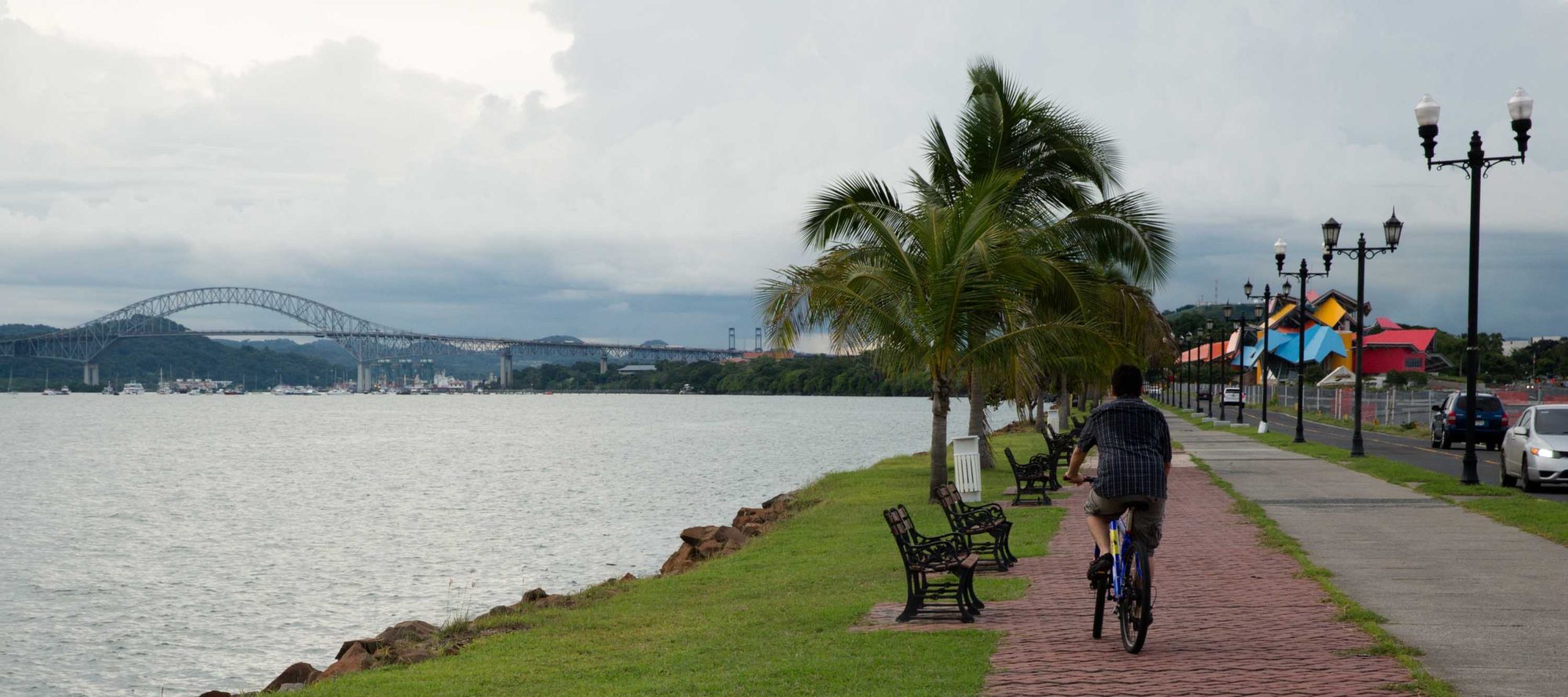Itinerary:
- The Panama Canal.
- Ancón Hill.
- Amador Causeway.
- Biomuseo.
Approx. Time: 6 hours.
Approx. Price: 144 USD*.
After the signing of the Hay-Buneau Varilla treaty, the US received from Panama all the land within a 5 mile distance from both borders of the canal. This area was known as the Panama Canal Zone. For more than 50 years, the US had complete sovereignty over these lands, until the implementation of the Torrijos-Carter treaties returned them to Panamanian hands. This tour visits landmarks that are located in what used to be the Panama Canal Zone: the Panama Canal itself, Ancón Hill, the Amador Causeway and the Biomuseo.
The Panama Canal
The Panama Canal, a marvel of modern engineering, was opened in 1914, as the steamship Ancón crossed its locks. More than a century later, the canal is still at the heart of worldwide commerce, allowing more than 300 million tons of raw materials and products to cross between the Pacific and Atlantic Oceans at ease. No visit to Panama is complete without getting to know the visitor center at the Miraflores Locks, on the Pacific side of the canal.
Ancón Hill
At 199 meters of height, the top of Ancón Hill is Panama City’s highest point. During the Panama Canal’s US administration, this was one of its most important areas, hosting both the Panama Canal Administration Building and the Governor’s House. In 1914, the first ship to officially cross the Canal, the SS Ancon, took its name from the hill. Nowadays, the hill is one of the most beautiful neighborhoods of the city, in part because it’s a nature reserve, where it’s fairly common to see wild fauna. Some of the best views of Panama City are to be found at the top of Ancón Hill.
Amador Causeway
Four islands lie close to the Pacific entrance to the Panama Canal, named Naos, Perico, Culebra and Flamenco. These islands were joined together by a causeway constructed with some of the material excavated during the building of the Panama Canal, and eventually the US military build several facilities here to protect the Canal. After the islands and the causeway were handed to the Panamanian government, they became a popular recreation spot for the locals, with restaurants, bars and marinas following soon. Nowadays, it’s common to see people walking, jogging and cycling the causeway, enjoying the views of Panama City’s skyline and its bay.
Biomuseo
Opened in 2014, the Biomuseo is Frank Gehry’s first and only building in Latin America. As it name implies, it’s centered around biodiversity, placing special emphasis on how the isthmus of Panama rose from the ocean’s depths, affecting biodiversity globally due to it linking North and South America and how it changed underwater currents worldwide. As usual in Gehry’s works, the building is an attraction in itself because of its bold design. Its roof, covered with brightly-colored tiles, makes the Biomuseo stand out among the rest of the buildings in the Amador Causeway, making it impossible to ignore.
* Service is charged based on an hourly rate, at 24 USD per hour. Estimated charges have been calculated based on the average amount of hours for this tour. The drivers are willing to make changes to the itinerary and spend more time on the attractions that the client would like to further explore, and will adjust the final price based on the hourly rate. The transportation service, the travel consultant’s charges to prepare the itinerary, and the driver’s explanations are included in this price; it does not include attraction entry fees, if any, which will be paid separately by the customer.

